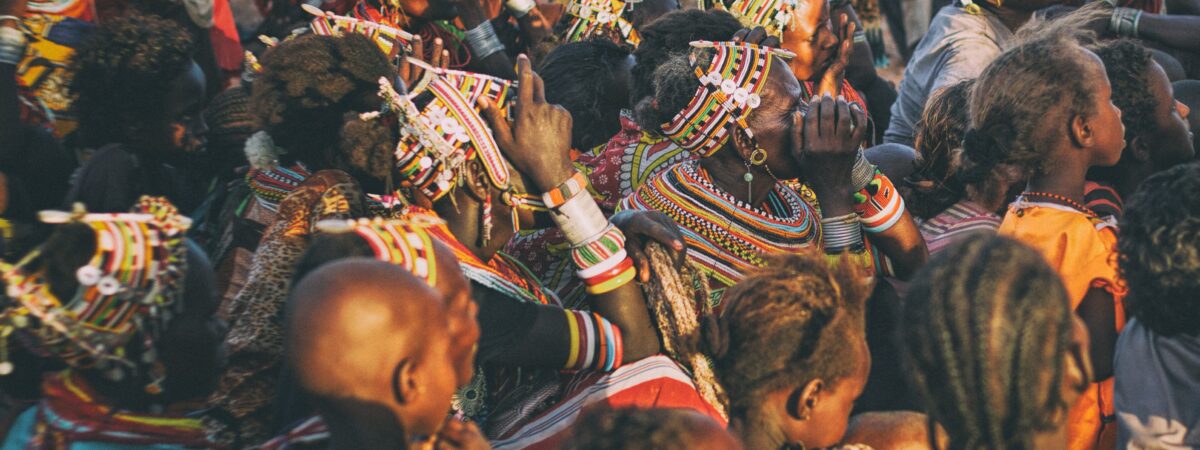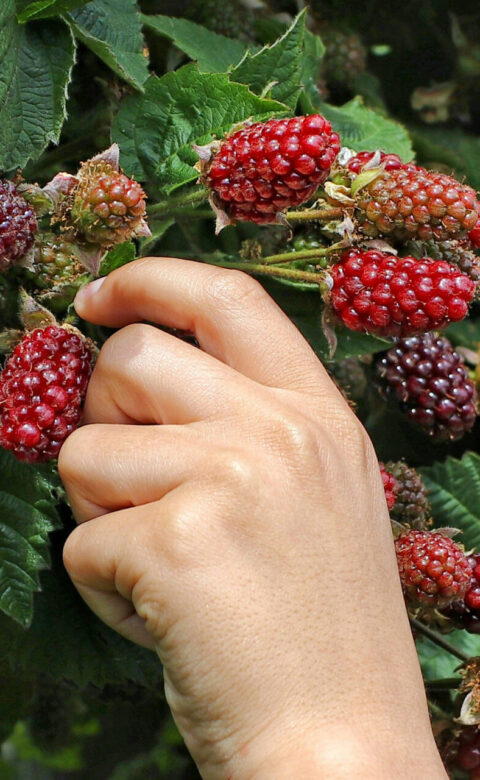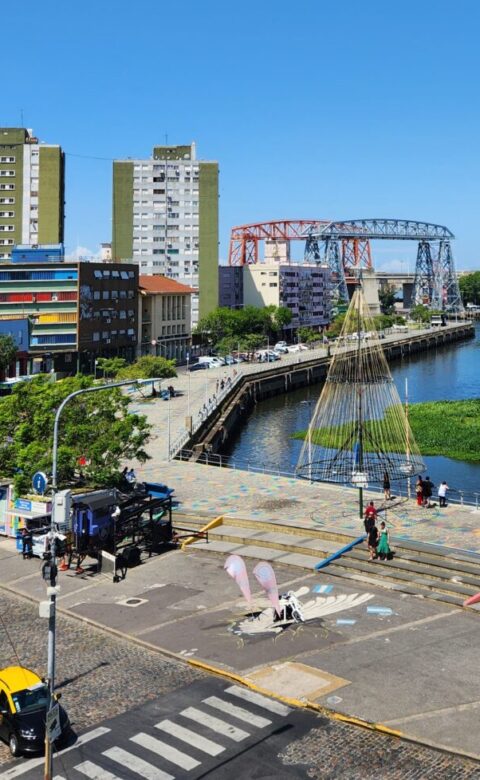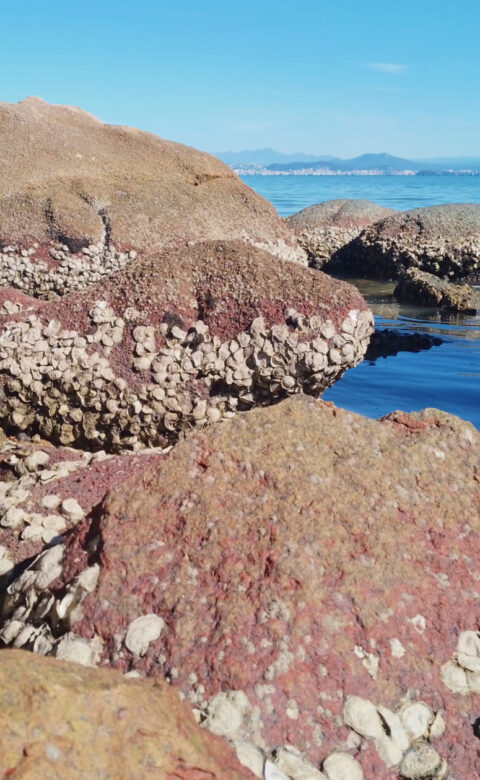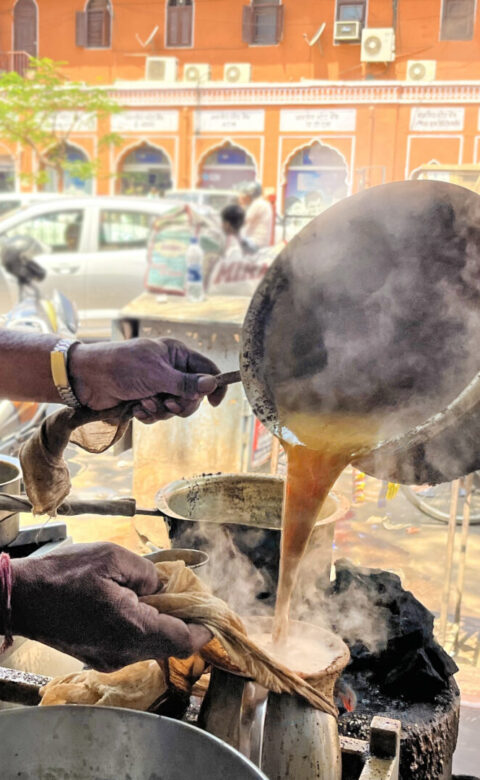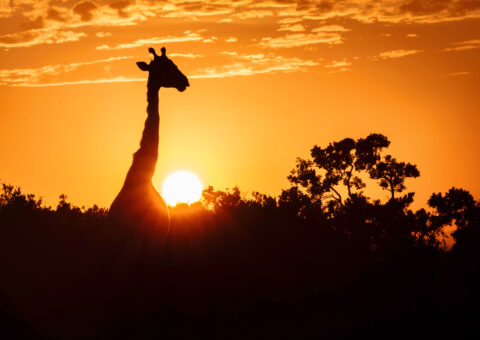Over boisterous conversations and lots of laughing, Maasai women taught Mwende Mutuli Musau about the traditions and meanings of the tribe’s rich bead-making culture.
One chilly morning in the midst of Kenya’s cold season, I packed my belongings in a big backpack, said goodbye to my family, and headed out for a month of volunteer work with AIESEC, a non-governmental student organisation. I was 19 years old as the van began its long, bumpy journey away from the comfortable urban lifestyle I was accustomed to in Nairobi.
Our destination? The Maasai Mara, one of the most revered national parks in Kenya and home to the Great Migration, one of the seven wonders of the world.
And, it turns out, a rich storytelling culture embedded in beads.
In a couple of hours, the city was long behind us and we were surrounded by thickets of bush and the sound of wild animals. Our group was greeted by tall women with warm smiles wearing red shukas (traditional shawls) and adorned in beautiful beads from head to toe.
The village was simple with several manyattas (traditional huts). Children were laughing and playing, elders were gathered around a fire, and women were cooking. It felt blissful and calm.
I was still soaking in the scene when a young moran (warrior) approached our group of five volunteers —: two women and three men — and separated us by gender. The other female volunteer and I were guided to a manyatta, our new living area. Then we settled around a bonfire, had dinner, and familiarised ourselves with traditional Maasai customs.
The morans gathered together, laughing and drinking cows’ blood. Afterward, they began chanting and jumping, which was a show of masculinity. I was transfixed by their red hair blazing in the night bonfire and their beautiful beads. It was impossible not to stare; they oozed with elegance and grace, so unapologetic and bold in their culture.
The following day, we were assigned chores. For the duration of my stay, I had to walk 7 kilometres twice a week with the rest of the young women to fetch water in the river, do household chores like cooking and cleaning, and, most importantly, learn how to make beads.
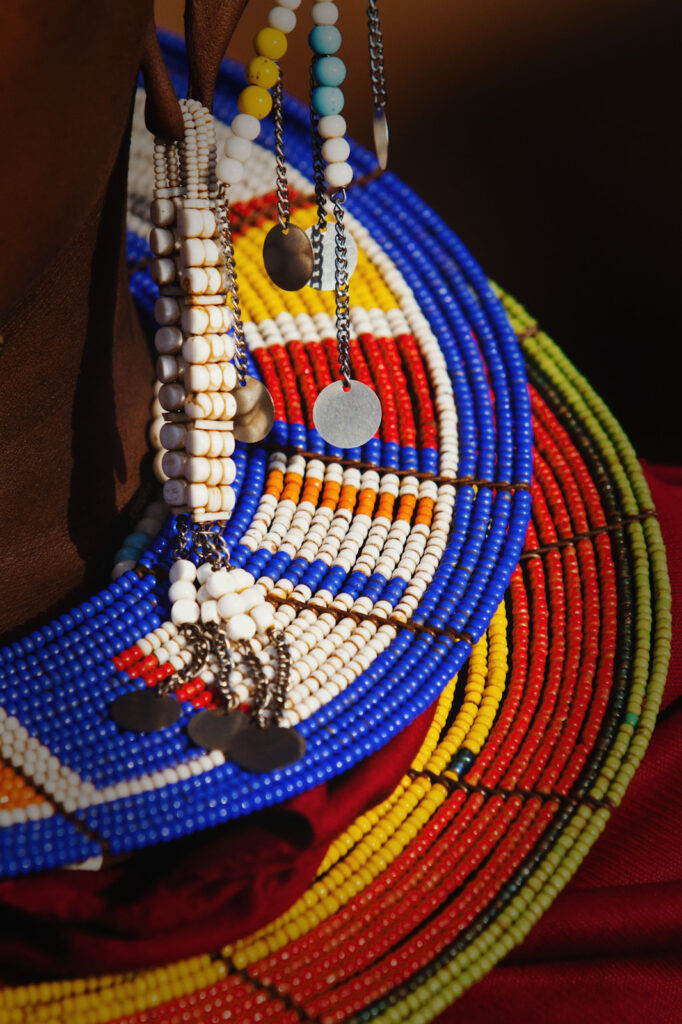
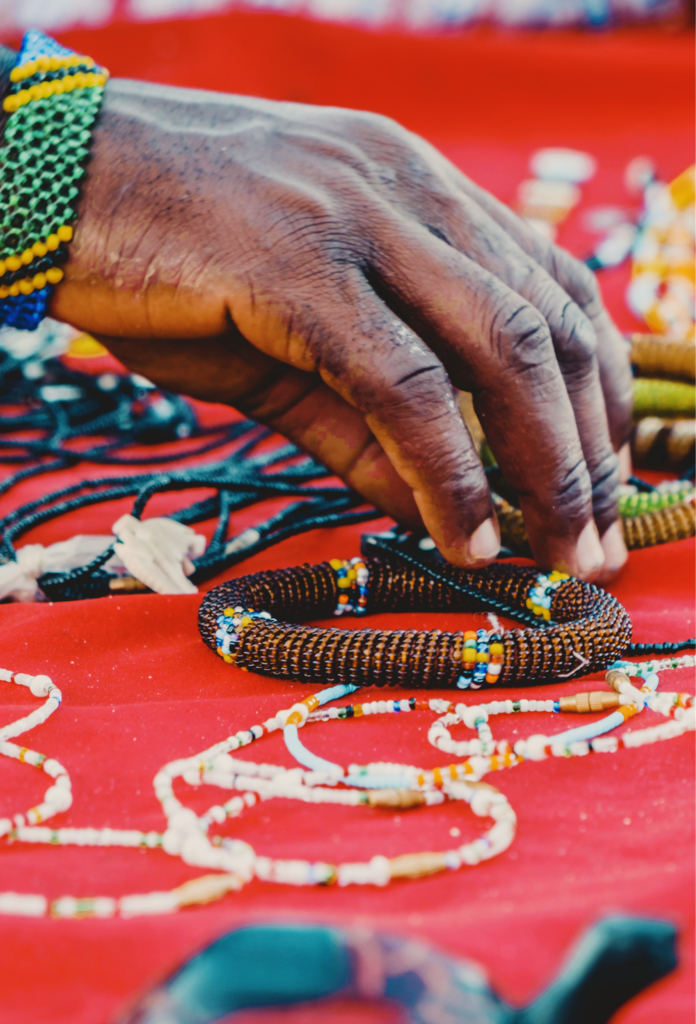
The Maasai are one of the most revered tribes in Africa for their nomadic lifestyle, signature dress, and beads. More than 3,000 years old, this tribe is also one of the earliest documented tribes on the African continent. The bead-making culture of Maasai women is an art form passed down through generations. It is the essence of womanhood, the core of who these women are.
In the following weeks, the Maasai women were kind teachers who patiently taught me about their ancient craft. I learned that this traditional craft follows Maasai women throughout their lives with various colours and patterns symbolising age, social status, and marital status. We often sat in a large group, the women talking loudly and laughing heartily while effortlessly making beads.
I developed a friendship with a young woman called Lankenua. She was a 25-year-old mother of three and the third wife to a prominent moran. She always said, “The colour of the beads can tell a lot about a Maasai’s story. When you wear Maasai beads, you tell the story of our villages and our people.”
During a bead-making session, I asked Lankenua, “What does each color mean?”
She proceeded to carefully select beads from all colours of the rainbow to illustrate her example and explain the meanings of seven colours: “Red is cow’s blood, unity, and bravery. Black is the color of the Maasai people’s skin and the challenges we face. White is health, purity, and peace. Blue is the sky above and energy. Yellow is the sun and fertility. Orange is generosity and friendship. Green is like grass; it’s the land we live on.”
These beads are worn as necklaces, pendants, and bracelets at social gatherings such as weddings, funerals, and rituals.
This traditional art form is much more than meets the eye. Lankenua disclosed to me that these beads communicate important messages to tribesmen without ever uttering a word. For instance, unmarried girls wear a flat beaded disk around their neck while married women wear a nborro — a long necklace with blue beads. This differentiation signifies to Maasai men which women are taken and those who are single.
“The beaded collar has a deeper meaning as well,” Lankenua continued. “It represents the perimeter of the village — a map that is shown in the light and dark beads at the end of the beadwork. The hole in the centre represents cattle livestock, which is our main source of food. The manyattas are the shapes on the collar; our homes are emblems in our beads.”
As an outsider, I had no idea that such stunning cultural jewelry had such a deep meaning. I was so privileged to learn about the ancient art form of bead-making firsthand by Maasai women, but the good news is that any visitor to East Africa has a chance to learn about and support these incredible artisans.
In Kenya and Tanzania, Maasai jewelry is sold by Maasai women at the Maasai market. This is the largest informal chain of curio shops in both countries that happens weekly in malls and public areas.
Maasai jewelry is also sold and exported internationally. A company called Sidai Designs in Tanzania employs Maasai women to create various designs. Its mission is to create brand awareness of Maasai jewelry globally and inspire future beadmakers. By giving Maasai women gainful employment, they are alleviated from a life of poverty and can improve their families’ quality of life.

